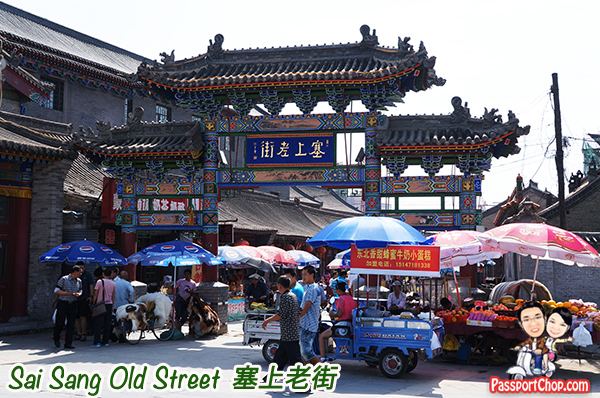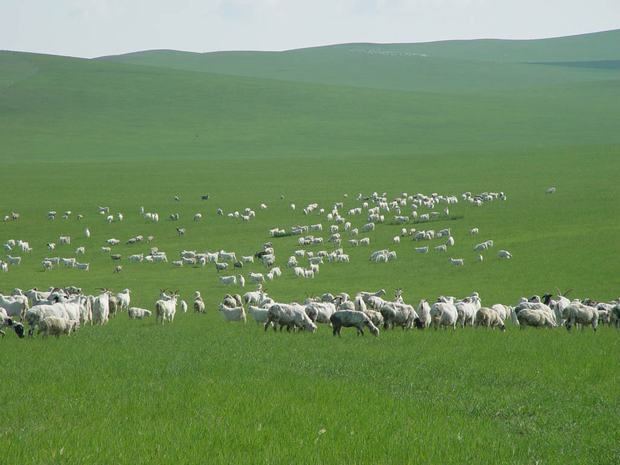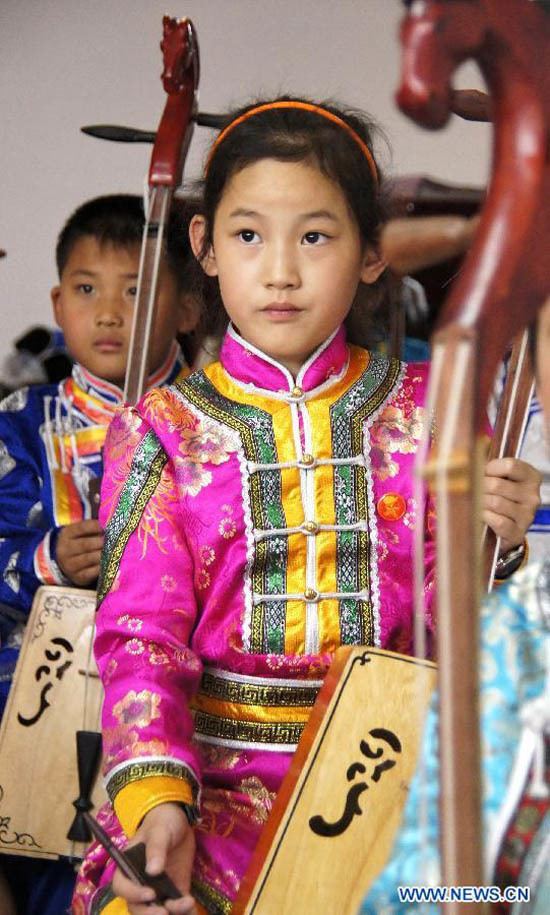Country Peoples Republic of China Population 1.407 million (2000) Area 17,186.1 km2 | Region Founded 1580 Mayor Qin Yi (??) | |
Points of interest Da Zhao Temple, Five Pagoda Temple, Zhaojun Tomb, Inner Mongolia Museum Colleges and Universities Inner Mongolia University, Inner Mongolia Normal University, Inner Mongolia Medical University, Inner Mongolia University of Technology, Honder College of Inner Mongolia Normal University | ||
Hohhot (Chinese: ; pinyin: ; Mongolian: ; Khalkha: ??? ??? Khokh khot; also romanized as Huhehot or Huhhot), abbreviated Hushi (Chinese: ; pinyin: ), formerly known as Kweisui (simplified Chinese: ; traditional Chinese: ; pinyin: ), is the capital of the Inner Mongolian Autonomous Region in North China, serving as the regions administrative, economic, and cultural centre.
Contents
- Map of Hohhot
- Shangri la hotel hohhot
- Hohhot inner mongolia part one
- History
- Geography
- Economy
- Culture
- Notable landmarks
- Cuisine
- References
Map of Hohhot
Its population was 2,866,615 inhabitants at the 2010 census whom 1,980,774 lived in the built-up (or metro) area made up of 4 urban districts.
Shangri la hotel hohhot
The name of the city in Mongolian means "Blue City"—Kuku-Khoto in Mongolian—although it is also wrongly referred to as the "Green City." The color blue in Mongol culture is associated with the sky, eternity and purity; in Chinese, the name can be translated as Qing Cheng (Chinese: ), literally, "Blue/Green City."
Hohhot inner mongolia part one
History

In 1557, the Tumed Mongol leader Altan Khan began building the Da Zhao Temple in the Tumed plain in order to convince the Ming dynasty (1368–1644) government of his leadership of the southern Mongol tribes. The town that grew up around this temple was called the "Blue Town" (Kokegota in Mongolian). The Ming had been blockading the Mongols access to Chinese iron, cotton, and crop seeds, in order to dissuade them from attacking the northern China plain. But in 1570, Altan Khan successfully negotiated the end of the blockade by the establishment of a vassal-tributary relationship with the Ming, for which the Ming renamed Kokegota to Guihua (, "Return to Civilization") in 1575. The population of Guihua grew to over 150,000 in the early 1630s as local Mongol princes encouraged the settlement of Han Chinese merchants. Sometimes Mongol armies attacked Guisui, such as the total razing of the city by Ligdan Khan in 1631. Altan Khan and his successors constructed temples and fortress in 1579, 1602 and 1727. The Tumed Mongols had long been semiagricultural there. Hui merchants gathered north of the gate of the citys fortress, building a mosque in 1693. Their descendants forms the nucleus of the modern Hui peoples district.
After the Manchus founded the Qing dynasty (1644–1911), the Kangxi emperor (reigned 1661–1722) sent troops to control the region, which was interesting to the Qing as a center of study of Tibetan Buddhism. The Qing dynasty built a strong garrison town near Hohhots southeast called Suiyuan (), supervising southwestern Inner Mongolia in 1735–39 against Mongol attacks from the north. Guisui and Suiyuan became Guihua District () of Qing China. French missionaries established a Catholic church in Guisui in 1874, but the Christians were forced to flee to Beijing during the antiforeign Boxer Rebellion of 1899–1901.
Geography

Located in the south central part of Inner Mongolia, Hohhot is encircled by the Daqing Shan (???, lit. Great blue Mountains) to the north and the Hetao Plateau to the south.
Economy
Hohhot is a major industrial center within Inner Mongolia. Hohhot, together with Baotou and Ordos, account for more than 60 percent of the total industrial output of Inner Mongolia. After Baotou and Ordos, Hohhot is the third-largest economy of the province, with GDP of RMB 247.56 billion in 2012, up 11.0 percent year on year, and accounting for approximately 15.5 percent of the provinces total. Hohhot is also the largest consumer center in the region, recording ¥102.2 billion retail sales of consumer goods in 2012, an increase of 14.9 percent from 2011. Huhhot has been a central developmental target for the China Western Development project that the Central Government is pursuing. There are many famous enterprises located in Hohhot, including Chinas biggest dairy producer by sales revenue Inner Mongolia Yili Industrial Group and China Mengniu Dairy Co.
Culture

Due to its relatively diverse cultural make-up, and despite its characteristics as a mid-sized Chinese industrial city, the Hohhot street scene has no shortage of ethnic minority elements. Tongdao Road, a major street in the old town area, is decorated with Islamic and Mongol exterior designs on all its buildings. A series of government initiatives in recent years have emphasized Hohhots identity with ethnic minority groups, especially in increasing Mongol-themed architecture around the city. All street signs as well as public transportation announcements are regulated to be in both Chinese and Mongolian.
Notable landmarks
There are over 50 sets of murals in southeastern Hohhot, including a "Horse-tending Image" (???). Over 50 pre-modern Buddhist temples and towers.
Cuisine
Food specialty in the area is mostly focused on Mongol cuisine and dairy products. Commercially, Hohhot is known for being the base of nationally renowned dairy giants Yili and Mengniu. The Mongol drink suutei tsai ("naicha" ?? in Chinese, "milk tea" in English), which has become a typical breakfast selection for anyone living or visiting the city. The city also has rich traditions in the making of hot pot and shaomai, a type of traditional Chinese dumpling served as dim sum.
